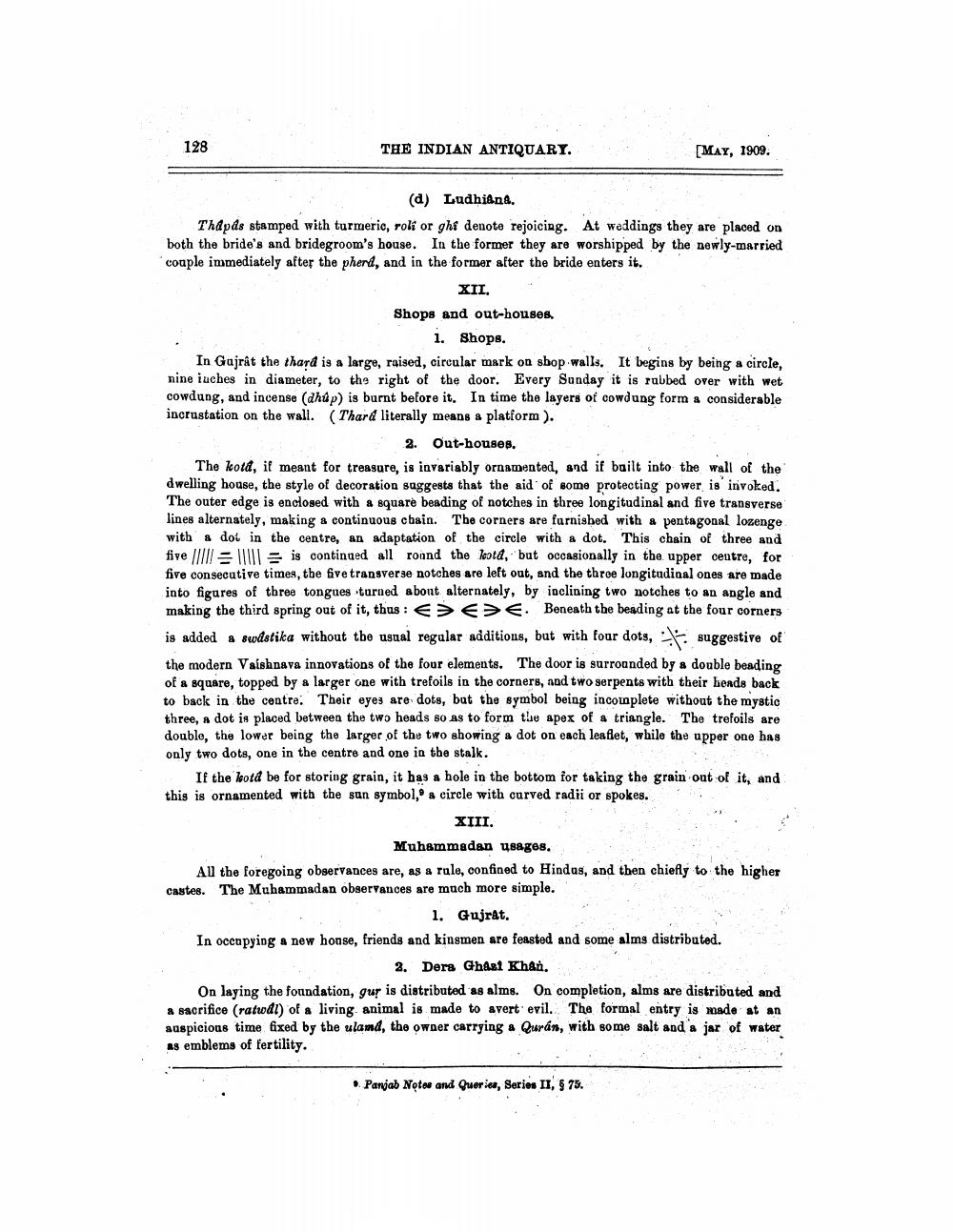________________
THE INDIAN ANTIQUARY.
[MAY, 1909.
(d) Ludhiana. Thapds stamped with turmeric, roli or ghi denote rejoicing. At weddings they are placed on both the bride's and bridegroom's house. In the former they are worshipped by the newly-married couple immediately after the pherd, and in the former after the bride enters it.
Shops and out-houses,
i. Shops. In Gajrât the thard is a large, raised, circular mark on shop walls. It begins by being a circle, nine iuches in diameter, to the right of the door. Every Sunday it is rubbed over with wet cowdung, and incense (húp) is burnt before it. In time the layers of cowdung form a considerable incrustation on the wall. Thard literally means a platform).
2. Out-houses. The kotd, it meant for treasure, is invariably ornamented, and if built into the wall of the dwelling house, the style of decoration saggests that the aid of some protecting power is invoked. The outer edge is enclosed with a square beading of notches in three longitudinal and five transverse lines alternately, making a continuous cbain. The corners are furnished with a pentagonal lozenge with a dot in the centre, an adaptation of the circle with a dot. This chain of three and five IIII= = is continued all round the kotd, but occasionally in the upper centre, for five consecutive times, the five transverse notches are left out, and the three longitudinal ones are made into figures of three tongues turned abont alternately, by inclining two notches to an angle and making the third spring out of it, thus : €> > Beneath the beading at the four corners is added a swdstika without the usual regalar additions, but with four dots, suggestive of the modern Vaishnava innovations of the four elements. The door is surrounded by a double beading of a square, topped by a larger one with trefoils in the corners, and two serpents with their heads back to back in the centre. Their eyes are dots, but the symbol being incomplete without the mystic three, a dot is placed between the two heads so as to form the apex of a triangle. The trefoils are double, the lower being the larger of the two showing a dot on each leaflet, while the upper one has only two dots, one in the centre and one in the stalk.
If the kota be for storing grain, it has a hole in the bottom for taking the grain out of it, and this is ornamented with the sun symbol, a circle with curved radii or spokes.
XIII.
Muhammadan usages. Au the foregoing observances are, as a rule, confined to Hindus, and then chiefly to the higher castes. The Muhammadan observances are much more simple.
1. Gujrat. In occupying a new house, friends and kinsmen are feasted and some alms distributed.
2. Dera Ghaet Khan. On laying the foundation, gus is distributed as alms. On completion, alms are distributed and & sacrifice (ratwdi) of a living animal is made to avert evil. The formal entry is made at an auspicious time fixed by the uland, the owner carrying a Quran, with some salt and a jar of water as emblems of fertility.
. Panjab Notos and Queries, Series II, S 75.




